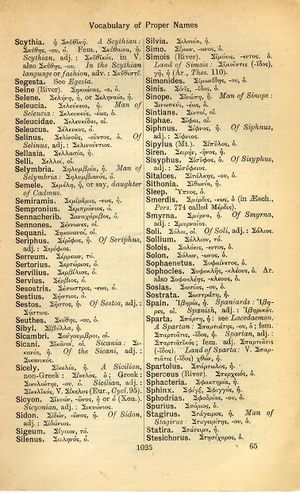Sphinx
Κρόνου καὶ Ἰαπετοῦ ἀρχαιότερος → more ancient than Cronos and Iapetus, ante-preadamite, antediluvian
English > Greek (Woodhouse)
Σφίγξ, Σφιγγός, ἡ.
Latin > English (Lewis & Short)
Sphinx: ngis (Gr.
I gen. Sphingos, Stat. Th. 1, 66), f., = Σφίγξ>.
I A fabulous monster near Thebes that used to propose riddles to travellers, and tear in pieces those who could not solve them; usually represented with the head of a woman and the body of a lion, afterwards also with the wings of a bird; or, also, with the head of a man and the body of a lion, Plin. 36, 12, 17, § 77 sqq.; Aus. Idyll. 11, 40; Sen. Phoen. 119; id. Oedip. 92; Stat. Th. 1, 66; Plaut. Poen. 1, 3, 35; Hyg. Fab. 67 al.—Augustus had the figure of a sphinx upon his seal, as a symbol of silence, Suet. Aug. 50; Plin. 37, 1, 4, § 10.—Plur.: pedes formati in speciem sphingum, Fest. s. v. picati, p. 206.— In a lusus verbb., Quint. 6, 3, 98.—
II A species of ape, perh. the chimpanzee, Plin. 8, 21, 30, § 72; Mel. 3, 9; Sol. 27 fin.>

